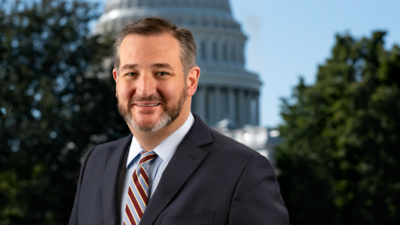Chicago Metropolitan Agency for Planning Environment and Natural Resources Committee met Jan. 9.
Here is the minutes provided by the committee:
Members Present: Lindsay Birt – Xylem, Keary Cragan – U.S. EPA, Jack Darin – Illinois Sierra Club, Martha Dooley – Village of Schaumburg, Aaron Durnbaugh – Loyola University Chicago, Jackie Forbes (for Tom Rickert) – Kane County, Danielle Gallet – Metropolitan Planning Council, Stacy Meyers – Openlands, Ted Penesis – IDNR, Mike Prusila (for Mike Warner) – Lake County Stormwater Management Commission, Deborah Stone – Cook County Department of Environment and Sustainability, Sean Wiedel – Chicago Department of Transportation
Members Absent: Elena Grossman – BRACE-Illinois at UIC, Andrew Hawkins – Forest Preserve District of Will County, Paul May – Northwest Suburban JAWA, Mike Sullivan – IDOT
Staff Present: Nora Beck, Brian Daly, Kate Evasic, Caitlin Goodspeed, Jane Grover, Kathleen Lane, Tony Manno, Jason Navota, Jared Patton, Conner Rettig, Melissa Silverberg
Others Present: Samantha Bingham, Garland Armstrong, Heather Armstrong, Edith Makra, Cheryl Scott
1.0 Call to Order
Environment and Natural Resources Committee Minutes
Chair Jack Darin called the meeting to order at 9:35 a.m.
2.0 Agenda Changes and Announcements
CMAP staff reminded committee members of the revised agenda which includes a presentation on the LTA/Community Planning call for projects. The presentation on transportation program selection will be rescheduled for a later date.
3.0 Approval of Minutes—November 7, 2019
A motion to approve the minutes of the November 7 meeting was made by Martha Dooley, seconded by Mike Prusila. The motion carried with all in favor.
4.0 LTA/Community Planning call for projects – Tony Manno, CMAP
Staff presented the projects with highest potential to be selected from the applications received from the 2019 joint CMAP and RTA call for projects conducted from September 17 to October 18, 2019. Staff gave an overview of the evaluation process, including the timeline, areas of assessment, and types of projects submitted. Staff then sought input from the Committee to assist in evaluating the 28 applications.
CMAP Board approval. Staff anticipates that selected projects will be approved at the CMAP Board meeting on April 8, 2020.
RTA comment period. The comment period for 2020 RTA Community Planning projects is open through Saturday, February 8, 2020. The final projects will be announced Thursday, February 20, 2020.
Evaluation process. Members discussed the value of incorporating the Agency’s core values and relationship with ON TO 2050 in the evaluation process.
Embedded staff planner. In response to a question regarding embedded staff planner projects, Tony Manno explained that it is a pilot project and, therefore, CMAP is not soliciting applications from communities through the call for projects. The program will be expanded to additional communities, but they will be selected through a separate process.
Staff capacity. In response to a question about CMAP staff capacity, Tony Manno responded that some of the 28 projects on the list are small compared to traditional LTA projects. He also stated that the Agency will have to balance LTA work with other initiatives to implement ON TO 2050.
Alternative support. In response to a question about “alternative support” projects, Tony Manno explained that the term was used during the 2019 call for projects to describe smaller projects that CMAP took on to assist more communities. CMAP is still interested in finding smaller opportunities, but is no longer referring to such projects as “alternative support.”
Feedback for applicants who are not selected. In response to a question about whether CMAP follows up with unsuccessful applicants, Tony Manno explained that, when applicants voice an interest, staff will provide information on how the proposal could better align with ON TO 2050. Staff will also direct applicants to other funding sources, such as IDOT’s Statewide Planning and Research (SPR) funds. Tony stated that IDOT will solicit SPR proposals in April 2020.
Innovation in planning. In response to a question about how CMAP staff can help communities identify opportunities to incorporate innovative planning approaches in traditional planning projects such as comprehensive plans, Tony Manno responded that staff are using a project charter template to work with applicants to identify these opportunities from the outset.
5.0 Gathering input on CMAP communications and outreach efforts – Kathleen Lane, CMAP
Staff have begun gathering and evaluating input from external stakeholders on how they interact with CMAP’s communication channels and leverage its resources. Staff will be gathering feedback from numerous groups but wanted to start with the unique perspectives from this Committee. Staff solicited input from the Committee around the CMAP website, reports and policy updates, weekly update, social media, engagement and events, awareness, and new opportunities.
Interest and feedback on a webinar series. Members voiced general support for a regular webinar series to highlight innovative topics and provide continuing education. Ideas and best practices included: recording webinars and sharing on social media; offering continuing education credits; providing personal perspective on implementation; promoting cutting- edge work at the Federal or State levels; making them interactive by using Q&A, surveys, webcam functions, and break-out sessions; and providing links to resources. Members also discussed the value of live streaming events and making recordings accessible for people who do not use social media.
Webinar awareness. In response to a question about how CMAP staff will promote webinars, Kathleen Lane mentioned utilizing a variety of channels, including the Weekly Update, social media, and municipal newsletters, as well as targeting audiences based on the topic.
Webinar structure. Members discussed the value of a webinar series and the ability to target an emerging topic to drive innovation in the region. Members also commented that webinars with variable timing (during the day) and duration (half hour to two-hour) can be effective. Kathleen Lane added that staff are in the initial stages and, once developed, will share a framework or structure with the Committee.
Feedback on CMAP website. Members discussed using the website to look up LTA projects, conduct research using CMAP’s extensive archives of reports and white papers, learn about other CMAP committee discussions and updates from the Board, and obtain data. Members commented that the colors used for hyperlinks are difficult to see. Melissa Silverberg took note and also explained that staff are working on developing a “topics” page that can be used to navigate the website. She also said that CMAP is hiring for someone to handle the Agency’s social media accounts and possibly create a blog to reach a broader audience.
Feedback on Weekly Update. Members are pleased with the Weekly Update and noted how it is succinct, easy to scan, and well organized by topic and geography.
Feedback on Social Media. Members provided different feedback on following CMAP on social media. Some members only use their social media accounts for personal matters. Others pointed to LinkedIn as an effective way to learn about what is happening in the region and at CMAP. Members noted that many public sector employees cannot access social media on their office computers, which limits their ability to engage with CMAP’s accounts. Kathleen Lane told members to contact the communications team with additional feedback.
6.0 Regional Climate Action Plan – Edith Makra, MMC and Jared Patton, CMAP
The Metropolitan Mayor’s Caucus (MMC), with assistance from CMAP, is developing a regional climate action plan compliant with the Global Covenant of Mayors for Climate and Energy (GCoM). MMC and CMAP staff provided an overview of the project, including a discussion of preliminary findings and potential next steps.
Greenhouse gas inventory. In response to a question about how land use changes (from undeveloped to developed) are accounted for in the inventory, Jared Patton explained that while it is not directly included in the inventory, it is still important in our work. While the direct contribution of land use changes are not accounted for, the related changes to transportation and building emissions that accompany land development are included in the inventory. Members encouraged the team to use data to help address land use changes, which are a major contributor to global emissions, in the action plan.
Climate stabilization goal. In response to a question about whether CMAP will update the climate stabilization goal to keep up with the rapidly changing science, Jason Navota responded that staff will be looking at target goals, as well as climate impacts of transportation and land use through the Agency’s climate work.
Electric vehicles. In response to a question about how electric vehicles (EVs) were factored into the greenhouse gas inventory, Jared Patton explained that the scenarios are broad and, therefore, do not detail how emissions reductions are achieved. However, CMAP’s policy team is researching the impacts of EVs in fleet conversion. The final climate action plan will also include sector-specific targets and goals, which will likely make recommendations for vehicle electrification.
Energy generation mix. In response to a question about generation mix and the greenhouse gas inventory, Jared Patton explained that the scenarios are based on the existing mix. He added that sector-based targets are being developed by the consultant team to inform recommendations in the regional climate action plan. Edith Makra stated that the plan could recommend adjustments to the inventory, but expects it to continue to evolve in the future.
Climate risk and vulnerability assessment. Jared Patton said the draft assessment will be shared with members for input.
Engagement activities. Edith Makra announced two engagement activities for members: an interactive session on Tuesday, January 21 in Montgomery, IL and a risk and vulnerability workshop to be held in March or April.
7.0 CMAP Climate Priority – Nora Beck and Jason Navota, CMAP
CMAP has identified climate as one of three priority areas for the Agency. Building on feedback received from the November meeting, staff provided an overview of the scale of the problem and then led the Committee in a discussion around climate adaptation and mitigation, including key partners in the region and a potential role for CMAP. A summary of the main topics of discussion follows.
Climate actions. Members brainstormed a list of actions, including: getting fossil fuels out of electricity generation and the importance of creating a more distributed system at the grid-level; energy policy at the local level; energy policy for government buildings; shifting personal transportation modes; net-zero building retrofits; nature-based solutions, including those that provide multiple benefits and protecting carbon sinks like existing natural areas both in and outside of the Chicago region; land use planning; and transportation planning. Participants also noted banning single-use plastics.
Influential actors. Members brainstormed a list of players, including: Sierra Club, Illinois Commerce Commission, Public Utility, Illinois Power Agency, Illinois Clean Jobs Coalition, Vital Lands, Prairie State Conservation Coalition, and forest preserve and conservation districts. Members noted the importance of transportation-sector actors, including CMAP.
Potential CMAP role. Members discussed the need to advise communities with land use planning and zoning decisions, specifically noting local zoning authority for the siting of intermodal facilities. Other potential areas include exploring the equitable use of incentives or disincentives for transportation programming and planning assistance; evaluating the effectiveness of current funding programs such as CMAQ; encouraging building preservation and reuse to reduce embodied carbon associated with new construction; developing innovative strategies for risk and vulnerability; and helping to pool regional clean energy demand from individual municipalities to bring down costs and unlock options to purchase renewable energy. Jason Navota noted that CMAP could look to support and learn from the efforts of actors with more expertise on topics like stationary energy, which is outside CMAP’s traditional work.
CMAP actions. Members brainstormed several actions, including: assessing program areas for climate and incorporating climate into the Planning Resources and Transportation Program areas; developing policy statements for actions that fall outside of CMAP’s primary role; identifying and supporting local climate leaders throughout the region; incorporating carbon goals into conformity analysis.
Big gap in climate action. Members brainstormed several areas, including: leadership around land use planning with nature-based solutions; transportation innovation; communication of risk and vulnerability; helping communities incorporate climate change in planning and MS4 permits; and provide data and analysis on savings from climate action.
Next steps. Jason Navota stated that staff will present the climate-related sections of the fiscal year 2021 work plan at a future meeting.
8.0 Other Business
None
9.0 Public Comment
Heather Armstrong stated the importance of eliminating diesel vehicles to improve air quality.
Ted Penesis announced that IDNR will be hosting a meeting on Chicago Area Food Access and Urban Planning with the USDA Food & Nutrition Service on January 22nd at the Experimental Station in Woodlawn, Chicago.
Brian Daly announced an upcoming workshop on green infrastructure and local ordinances, which CMAP and the Chicago Region Trees Initiative will host on February 18th at CMAP’s offices.
10.0 Next Meeting
The next meeting will be March 5 at 9:30 a.m. in the DuPage County conference room.
11.0 Adjournment
The meeting adjourned at 11:35 a.m.
https://www.cmap.illinois.gov/documents/10180/1072560/2020-03-05-ENR-3.0-Minutes-2020-01-09.pdf/33cb0ccf-239a-e5e5-bce3-0807a41ccdcb




 Alerts Sign-up
Alerts Sign-up